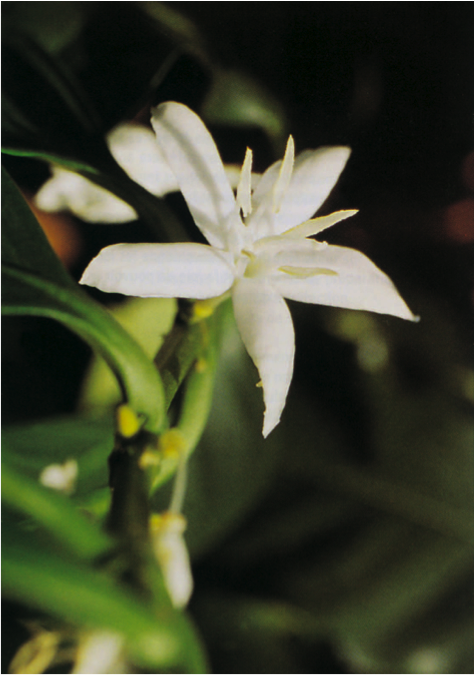Shortly before the publication of Le Nez du Café Swiss chemist Yvon Flament identified 850 aromatic compounds found in coffee in varying proportions and intensities.
Determining factors

Roasting transforms the weak greenish smells of green coffees into the wonderfully pervading coffee aromatics that are well known and loved.
This critical stage in coffee production subjects green coffee beans to heat that raises them from room temperature to 220 - 255 degrees C. or more, expanding the bean and completely changing its complex aroma chemistry.
Development and optimisation of a coffee’s latent aromas is a wonderful alchemy to those who perceive the potential peaks of undeveloped flavor and added market value (crucial to repeat purchasing and medium-term profits). But for those who can see no further than cost cutting, it can prove a disaster. The roaster combines the elements of radiant heat and hot air, air volume, speed and temperature, and time, all of which interrelate, to reveal the best aromatics inherent in a coffee.
The roasting time of each stage in the roasting cycle may be varied, and the total roasting time may range from 90 seconds to 20 minutes, or more. Some regard 3 to 4 minutes as optimum for cup quality in a «fast» roaster built to deliver very high volumes of hot air and gentle, low finishing temperatures.
Light, medium and dark roasts can all be produced at a given roasting speed. Roasting starts slowly as heat is transferred to the bean, but then accelerates, even after reducing applied heat, so that the ending of roasting requires split-second timing, or judgement, if the optimum flavor is to be reached and not passed by.
A certain balance between the coffee’s aromatics and the roast notes may be struck to suit the values of each market sector.
The batches of coffee need to be well developed in the roaster, at a roast level suitable for the coffee’s origin, otherwise you may not be able to recognise the characteristic aromas supplied in Le Nez du Café.
Book excerpts from Le Nez du Café 36 aromas. Turn to pages 97-101 to find out more!
Jean Lenoir's selection
Jean Lenoir's team had to direct its research on taste and smell with a view to selecting the main aromatic compounds, responsible for scents from the vast number of odoriferous molecules identified in coffee.
Once the most powerful odorous compounds in coffee were identified, the most significant molecules had to be selected and made accessible to our sense of smell.
They could not be presented as they were. Too strong, or too weak, their concentration was finely adjusted in order to achieve the right notes, which are now available to help everyone learn the components of coffee.
The 36 aromas of Nez du Café: EARTHY NOTE: 1 earth. VEGETABLE NOTES: 2 potato, 3 garden peas, 4 cucumber. DRY/VEGETAL NOTE: 5 straw. WOODY NOTE: 6 cedar. SPICY NOTES: 7 clove-like, 8 pepper, 9 coriander seeds, 10 vanilla. FLORAL NOTES: 11 tea-rose/redcurrant jelly, 12 coffee blossom, 13 coffee pulp. FRUITY NOTES: 14 blackcurrant-like, 15 lemon, 16 apricot, 17 apple. ANIMAL NOTES: 18 butter, 19 honeyed, 20 leather. TOASTY NOTES: 21 basmati rice, 22 toast, 23 malt, 24 liquorice, 25 caramel, 26 dark chocolate, 27 roasted almonds, 28 roasted peanuts, 29 roasted hazelnuts, 30 walnuts, 31 cooked beef, 32 smoky note, 33 pipe tobacco, 34 roasted coffee, CHEMICAL NOTES: 35 medicinal, 36 rubber.